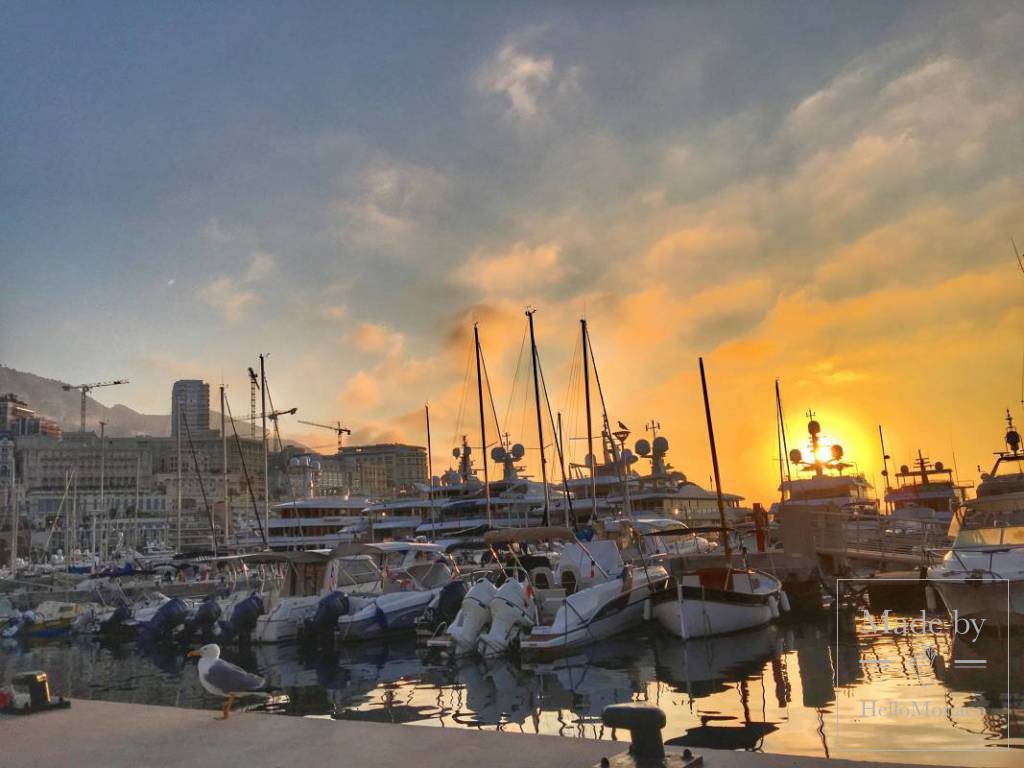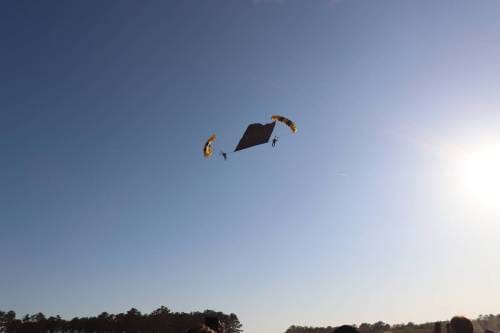We selected for you top 5 yacht stories of the last week at Yacht Harbour.
Fire at MB92 shippyard in Barcelona caused a large column of smoke
A fire broke out at the shipyard MB92 in Barcelona in the afternoon at 14:30, according to witnesses. Since then, the fire has been taken under control, and not one of the ships or people in the area has been injured.
The fire at the Marina Barcelona 92 shipyard caused a large column of smoke. According to sources in the port, the fire was extinguished after an hour.
Ten firefighters worked in the fire department. The port administration told that the cause of the fire is still unknown, but no ship was injured, and smoke is almost invisible.
MB92 announced in a statement that the fire started on an auxiliary vessel designed for maintenance and painting of materials, which caused a striking column of smoke, but had a “limited impact”.
The cause of the fire remains unknown, and the shipyard confirmed that the fire started in a secondary installation designed for maintenance and painting.
The yacht repair and maintenance company made sure that the fire did not spread to any other MB92 vessel and did not affect vessels moored at its facilities.
EXTRA 130 Alloy launched today in Savona: superyacht premiere at Monaco Yacht Show
The new EXTRA 130 ‘Alloy motor yacht, named “L.A.U.L.”, was launched today at the Palumbo Superyachts shipyard in Savona. 40-meter L.A.U.L. Superyacht was built in just 15 months from the date of signing the contract with the European shipowner and is the flagship of the EXTRA Yachts line and the third yacht launched this year after the EXTRA 86 ’Fast“ Mini K ”and EXTRA 93’ “Ohanna”.
L.AUL represents marine architecture from Rogantin Studios, which worked in collaboration with the technical department of Palumbo Superyachts.
The yacht design was developed by Francesco Guide, combining cutting-edge innovative solutions and eye-catching unique design. An attractive profile and an exquisite play of contrasts between the elements of fiberglass and aluminum emphasize the individuality of the vessel and create an incredibly elegant look. Large windows give a magical sense of presence under a crystal dome with breathtaking panoramic views.
Due to its longer length, EXTRA 130 accommodates 10 – 12 people, distributed between the main deck and the lower deck. The master suite is located in front on the main deck. The upper deck extends completely over the master. In fact, a U-shaped dining room and a large solarium are located on it, with sunbathing, seating and aft dining areas. Even with the front seating area, the crew can still move on the bow, having full side decks for access.
The impressive number of advantages makes the EXTRA 130 Alloy an ideal superyacht for socializing and entertaining. For example, the upper deck boasts an outdoor dining area with a TV, bar, large sofa and deck chair, as well as a large sunbathing area and several armchairs.
The interior layout of the superyacht consists of four cabins on the lower deck, including 1 VIP, 1 double and 2 double cabins for guests. All cabins have private bathrooms. The owner’s cabin is located on the main deck in the full width of the hull.
There are 4 cabins in the crew area, which can accommodate 6 crew members, and the captain’s cabin is located on the upper deck adjacent to the wheelhouse.
The hydraulic drive mechanism of the transom allows it to recline, opening a large garage, which houses a 5.36 meter tender and jet ski.
In the EXTRA Yachts series, two new EXTRA 86 superyachts are also under construction and are planned to be delivered to customers in 2020.
126m Octopus: Paul Allen’s legendary explorer superyacht now listed for sale
An iconic Lurssen explorer superyacht Octopus that still holds the title of the largest explorer in the world with her 126.2-metre LOA, ahead of the delivery of the giant 183-metre REV, has been listed for sale jointly through Fraser and Burgess. The news comes 11 months after the yacht’s passionate owner Paul Allen sadly passed away at the age of 65.
Paul Allen was one of the founders of the Microsoft, alongside with Bill Gates. Paul Allen also owned NBA’s Portland Trail Blazers and NFL’s Seattle Seahawks teams, with his fortune estimated at $20,3 billion by Forbes. It is well known that he had a passion for the ocean and adventures, owning a 92-metre Nobiskrug Tatoosh in addition to Octopus.
Unlike the other owners of superyachts who are trying to stand out with non-standard form or a length of their boats, Paul Allen has made a bid for excellence, for example, his yacht was built under the scheme of diesel-electric with 8 diesel generators, who simultaneously work on two electric motors of 6 megawatts, propelling screws.
Also, Octopus has thrusters that allow her to go into any port or moor without help of tugboats despite the length of 126 metres.
With accommodation for up to 26 guests across 13 cabins, and 63 crew across 30 cabins, Octopus has explored multiple destinations since her delivery in 2003, including the coast of Antarctica, traversed the Northwest Passage and recovered the ship’s bell from the wreck of HMS Hood at a depth of 2.8km for the Royal Navy.
Other notable discoveries include the wrecks of the WWII battleships USS Indianapolis and IJN Musashi off the Philippines and the aircraft carrier USS Lexington in the Coral Sea.
Octopus comes with abundance of features and amenities specially tailored for those looking to explore the globe’s most remote and inaccessible destinations. For instance, the submarine Pagoo can dive with eight guests and two crew for up to eight hours. Octopus also houses two helicopters, seven tenders, two liferafts, an ROV capable of diving to 3km and several jetskis.
A dive centre and hyperbaric chamber are also on board, along with a beach club with bar on the starboard side.
The world’s third largest: 163m superyacht Eclipse anchored in Cavtat
With the summer season close to its end, Croatia has already seen some of the world’s largest superyachts visiting her harbour this year, including the 141-metre superyacht Yas spotted in Dubrovnik. This time, the 162.5-metre Eclipse, the world’s third largest superyacht in terms of her LOA, has dropped anchor in Cavtat.
Built in 2010 by German yard Blohm+Voss, the legendary superyacht belongs to Russian billionaire and the owner of Chelsea football club Roman Abramovich. The latter owns stakes in steel giant Evraz and Norilsk Nickel, contributing to his estimated net worth of $12.3 billion.
According to Forbes, Eclipse cost the Russian billionaire nearly $400 million. Meanwhile, the additional equipment on-board has been believed to increase her value to €800 million. The fourth in his private fleet, Eclipse held the title of the largest vessel in the world until the delivery of the 180-metre Azzam in 2013.
At the moment, Eclipse remains one of the most private superyachts in the world. Although not all the details of the luxury megayacht are unveiled, it is known that the superyacht designed by Terence Disdale features two helicopter pads and carries three helicopters at a time, two swimming pools, countless hot tubs, a mini-submarine, three launch boats and a crew of 70 to operate all the equipment.
It is believed that Eclipse boasts a military-grade missile defense system, armor plating and bulletproof windows, while hosting a private theatre, a 56-metre private owner’s deck and a fitness centre. One of the most notable feature is a 16 metre swimming pool that can be converted into a dance floor. Eclipse can reportedly accommodate 36 guests in 18 cabins.
The world’s largest expedition superyacht REV heading to Norway
After days of preparation, the 182.9-metre Research Expedition Vessel (REV Ocean) has been technically launched in Tulcea, Romania last month. The 17,440 GT superyacht set to become the largest in the world, surpassing the 180.6-metre Azzam, has now begun her journey to Brattvåg in Norway for further outfitting works.
The superyacht was designed by Espen Oeino for expedition activities has been built by commercial shipbuilder VARD. The renowned designer also worked on the world’s largest expedition superyacht at the moment of writing, the 125-metre Lurssen Octopus.
REV has been commissioned by Norwegian ocean research company Rosellinis Four-10, owned by Norwegian industrialist billionaire Kjell Inge Roekke. His real-time net worth meanwhile is estimated at $3.2 billion (Forbes).
Built in partnership with WWF Norway, REV will also be available for charter for recreational purposes and expeditions. She will be able to accommodate up to 60 scientists and 30 crew during research expeditions once finished.
Her robust exterior lines and modern features ensure she is able to cruise in arctic and tropical areas alike, with a hull built to ICE PC6 for navigation in ice. Two helipads can host drones and helicopter, while overhead cranes can lift and launch equipment weighing up to 20T over the side.
REV shall come equipped for conducting research that covers the entire marine ecosystem, using advanced technologies. She shall be deployed by scientists for innovative research expeditions which explore issues such as the impact that CO2 emissions have on the oceans, plastic pollution, protection of endangered species and sustainable fishing.
The vessel will be constructed to run on diesel electric engines, with an additional 3MW lithium-ion battery pack for peak shaving and ensuring optimum efficiency. She will also qualify for the Polar Code adopted by The International Maritime Organisation for ships operating in Arctic and Antarctic conditions and can operate autonomously for 114 days.
What is more, REV will come packed with a range of equipment designed to explore, document and collect, monitor and survey marine areas, currents, the seabed, fish and plant life, while cutting-edge laboratory facilities enable on board analysis. Her drop keels enable echo sounders and sonars to be placed in undisturbed water below the hull for research of the world’s ecosystems, and built into her stern is a trawl hangar and pelagic trawling system.
There will be an auditorium for lectures, and the capacity for live streaming, also a Moonpool, an eco-harvesting system for live catch and release of biomass and pelagic samples, and an underwater hydrophone system for listening to ocean mammals.









